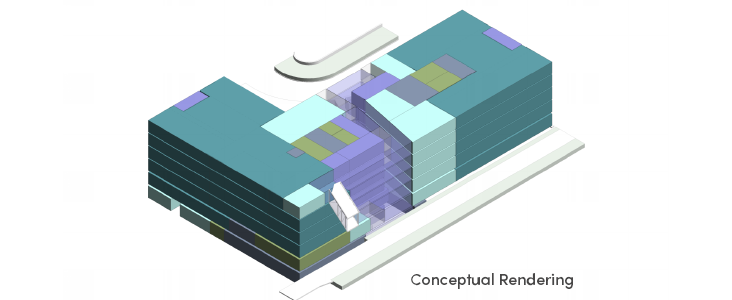In November 2018, Senior Vice President for Health Sciences Michael Good, MD, established the Workspace Taskforce to examine our workspaces and create recommendations for how we should evolve to give U of U Health employees the best environments to care for our patients and teach our students. The taskforce authored a report that looked at the next ten years and included a recommendation to build a new faculty/staff office building in the open space next to the Primary Children’s Eccles Outpatient Services facility. University of Utah Health leadership accepted this recommendation and, pending legislative approval for bonding authority, design and programming are moving forward.
The new office building will be known as the Healthcare, Educators, Leaders & Innovators Complex, or HELIX for short. HELIX was chosen after an institution-wide call for naming suggestions.
As the design and programming of HELIX begins, the Workspace Taskforce is soliciting input from the U of Utah Health community to identify what is most important to employees when it comes to their work environments in future workspaces, HELIX included.
“Given that resources are finite, decisions about design and space allocation inevitably require tradeoffs,” says Sam Finlayson, MD, co-chair of the Workspace Taskforce. “The taskforce does not pretend to be all-knowing in this process and is actively seeking to understand how faculty and staff value the kinds of space and amenities that the new building can provide.”
Compared with some of the other facilities U of Utah Health has completed over the past year, a new office building might not seem all that exciting. Yet, with employees helping the taskforce better understand how HELIX could be designed and equipped to offer the space and tools needed to both improve productivity and well-being, the potential is there to create a truly innovative building.
“What is exciting about [HELIX] is the fact that we have so many design opportunities,” says Finlayson. “We expect that there will be common spaces and amenities that will make it a special place to work. We also expect it will be a welcoming home base for departments, and an effective space to get work done individually and in teams.
“While it might not meet the expectations of faculty and staff who have in mind traditional workspaces, we are hopeful that we can create something that is overall better, more comfortable, more community-focused, and still adequate to meet the needs of those who need private spaces to work.”
Check back for updates on HELIX and the other Campus Transformation projects, both current and future.
